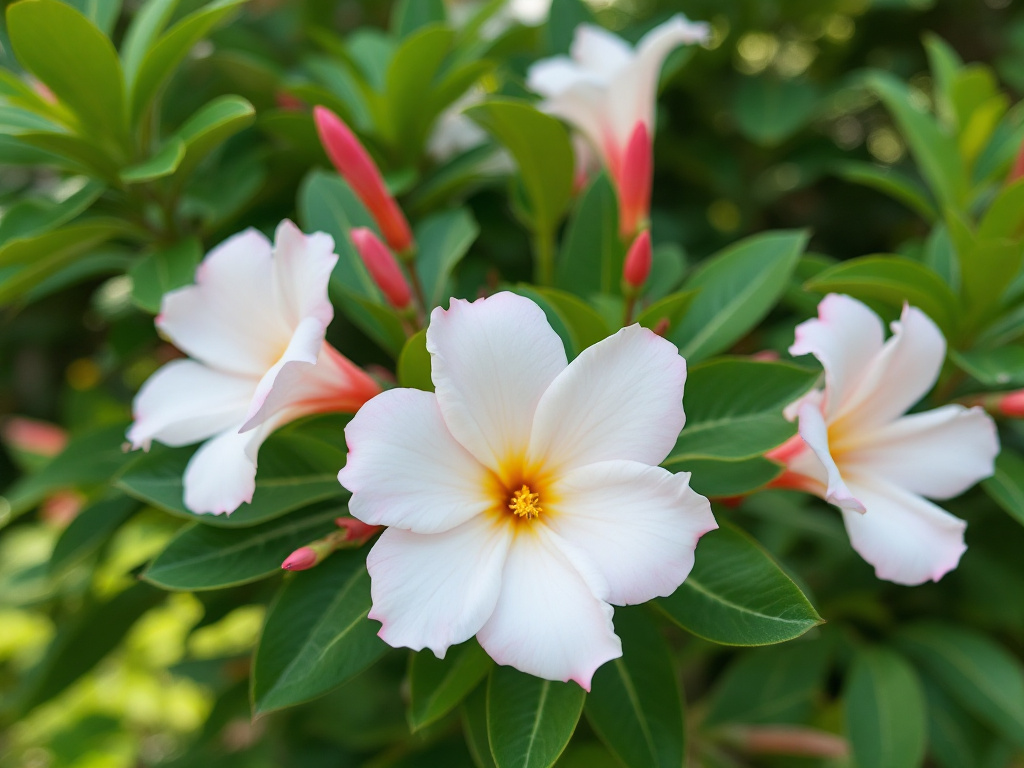Image generated by flux-ai.io & content generated by ChatGPT Version 4o-mini
Oleander: Beauty and Caution for Gulf County Residents
Residents of Gulf County, Florida, often enjoy the vibrant beauty of oleander (Nerium oleander), a popular shrub known for its colorful flowers and hardiness in our warm climate. However, recent research highlights not only the appeal of this plant but also some important considerations for gardeners and homeowners in our community.
What is Oleander?
Oleander is a shrub that can grow between 10 to 18 feet tall, flaunting long, dark green leaves and flowers that bloom in various shades, including red, white, yellow, and pink. It thrives in full sun and is well-suited for the sandy soils typical in our coastal area, making it a common choice for landscaping in Gulf County. Notably, it’s also quite drought-tolerant once established, which can be a significant advantage given Florida’s fluctuating rainfall patterns.
The Beauty Comes with Risks
While oleander adds aesthetic value to gardens and public spaces, it’s important to be aware that it is highly toxic. All parts of the plant contain toxic compounds that can be harmful to both humans and animals if ingested. For instance, just a small amount of oleander leaves can be lethal to livestock, with horses needing only 15 to 30 grams to face serious health risks. In Gulf County, where agriculture plays a significant role, this toxicity is particularly concerning for local farmers and pet owners.
Pest Problems: The Oleander Aphid and Caterpillar
As beautiful as oleander is, it’s not without its share of pests. The oleander aphid, a small yellow insect, is one of the most common pests that can infest the plant. These pests feed on the tender growth of oleander and can quickly multiply in warmer weather, especially during spring. Signs of an infestation include sticky honeydew on leaves, which can lead to sooty mold—a black fungus that can harm the plant’s health.
To manage oleander aphids, Gulf County gardeners can use natural methods such as introducing beneficial insects or reducing watering and fertilization, which discourages the growth of the young shoots that aphids love to munch on. If the infestation is severe, insecticidal soaps and oils can be effective, but they should be used as a last resort.
Another pest to watch out for is the oleander caterpillar, which can cause noticeable damage to the plant. These orange caterpillars feed on oleander leaves and can be identified by their distinct appearance. The best way to control them is to remove affected branches, which is both an environmentally friendly and effective method.
Best Practices for Oleander Care
For those in Gulf County looking to plant oleander or maintain existing ones, here are a few tips:
- Location: Plant oleander in full sun and behind dune lines if near the coast to protect it from salt spray.
- Soil: Ensure good drainage; oleander thrives in sandy soils typical of the area.
- Watering: Once established, water sparingly to promote drought tolerance.
- Pest Management: Regularly check for aphids and caterpillars, using natural controls whenever possible.
Conclusion
While oleander can enhance the beauty of Gulf County gardens with its colorful blooms, it’s essential for residents to be aware of its toxic nature and the pests it attracts. By taking proper care and precautions, you can enjoy this lovely plant while keeping your family and pets safe. As always, if you have questions about gardening or pest management, don’t hesitate to reach out to the local County Extension Office for guidance!
References
ENH1310/EP574: Key Plant, Key Pests: Oleander (Nerium oleander). (n.d.). Ask IFAS – Powered by EDIS. https://edis.ifas.ufl.edu/publication/EP574

